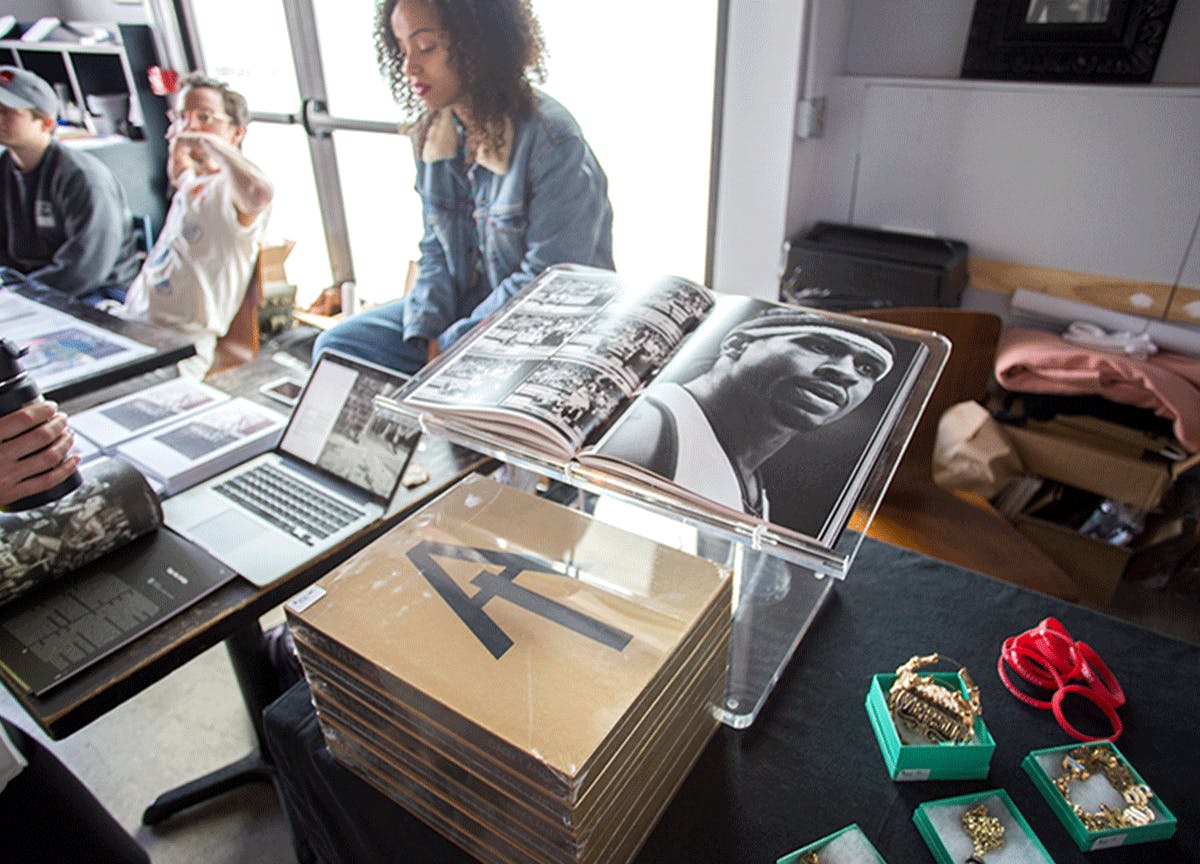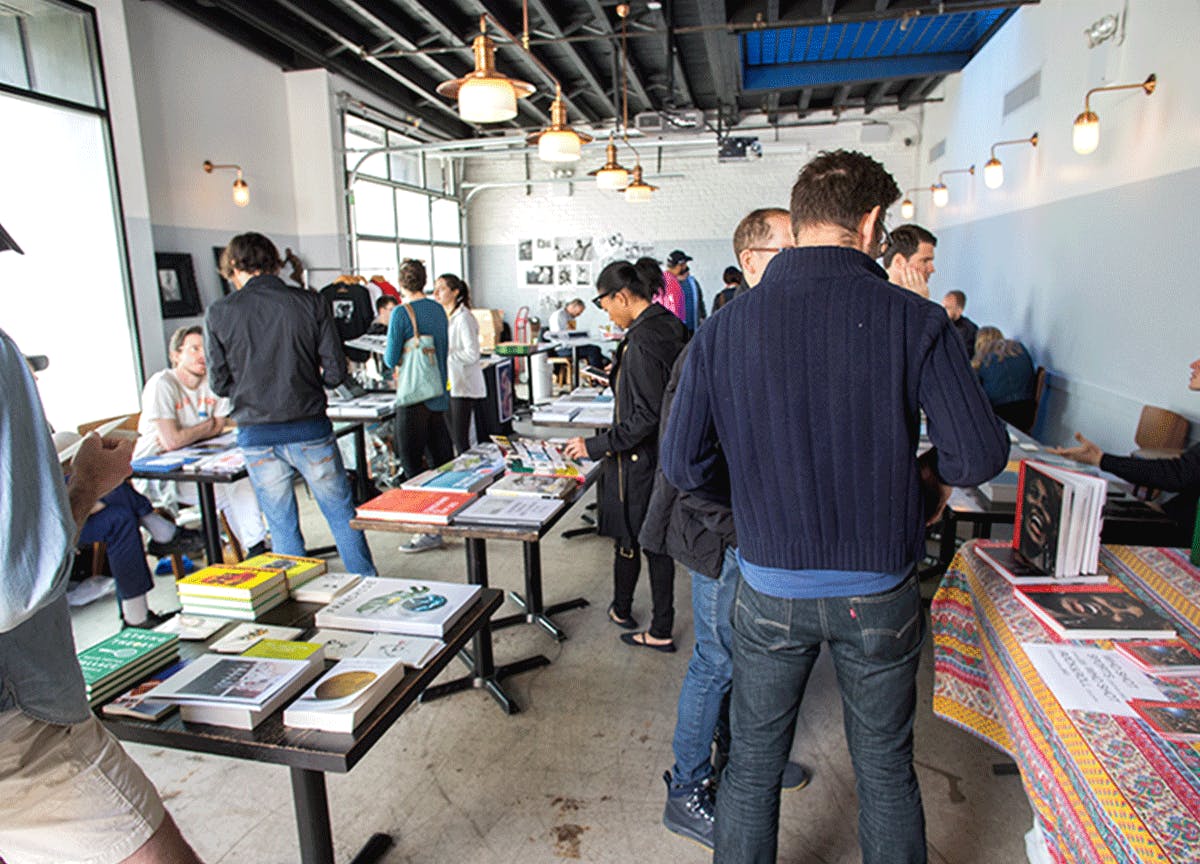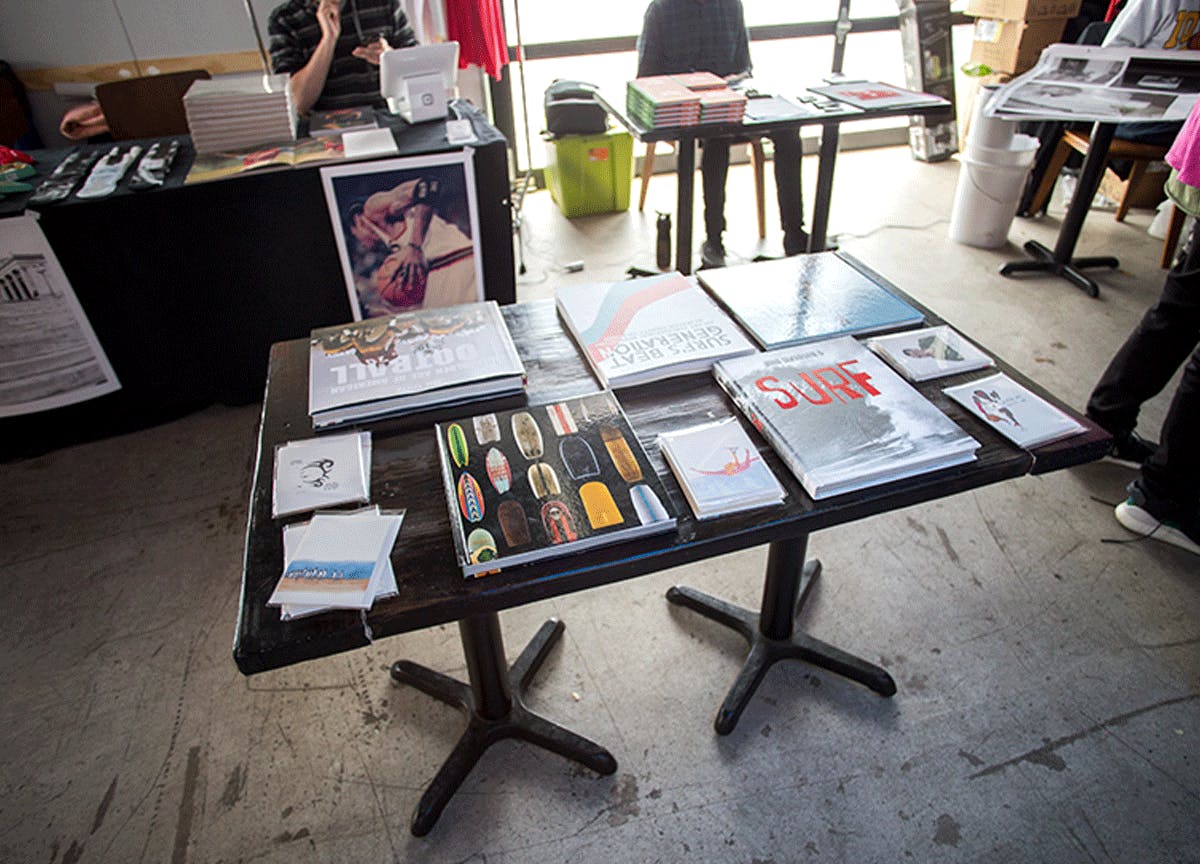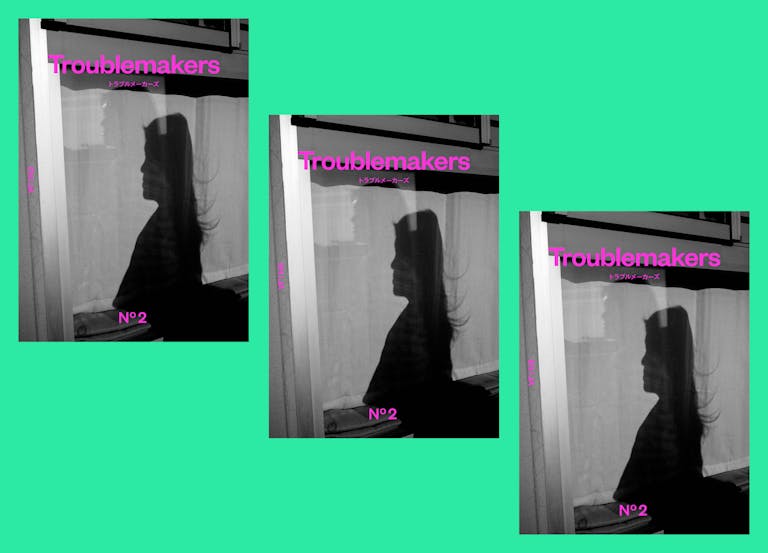Bleed & Score is a new sport print festival in New York
Over the weekend, Bleed & Score set up camp in a beer hall in Brooklyn, and hosted stalls for independent publishers in sport. Part magazine sale, part community get-together, it was an exciting chance for print geeks to soak up well-known titles like Victory Journal, as well as smaller, newer zines.
See our chat with founder Chas Wagner below, where he talks about mixing athletic pursuit with creativity. You can also find out the indie sports titles he’s particularly excited about right now, which includes a hockey and a cycling title, both of which champion the everyday New Yorker whose week revolves around planning those precious hours for sports.

What is Bleed & Score?
Bleed & Score is a celebration of printed matter within the sports community. With many makers of sports zines, magazines and books operating in individual silos, Bleed & Score’s goal is to unite the athletes and artists who share a passion for print.
Why did you start it?
I was greatly inspired by Food Book Fair’s Foodieodicals program, a smorgasburg of food zines and mags. Not to mention, I’ve been extremely jealous of the ongoing magazine events in London hosted by Stack and MagCulture. Here in New York, while we do have a flurry of independent publishing, no one seems to be connecting the dots, and not just in sports, but all categories.
Why was it the right time to have an event like this?
Victory Journal has been the gold standard in the sports magazine game for several years now. Then, in 2012, Howler launched a beautiful illustration-centric title for the soccer community that set a new, exciting path. Over the last couple years, we’ve started to see many “Victory’s for X” or “Howler for Y.” Racquet, a lovely new title, is like Howler for tennis. On the photography side, you now have Good Sport out of Melbourne, with hints of Victory, but mixes sport and creativity in a compelling way. There’s also direct-to-consumer sports apparel brands, such as Rapha and Tracksmith, that have launched their own print journals, Mondial and Meter. Bottom line, name the sport and there’s now an indie mag for that community.

We always hear independent publishers say how much they look forward to events where magazine makers can get together. Why do you think that sense of community is important?
Because it’s a crazy, expensive endeavour and you need to connect with the other crazies! It’s a deeply spiritual thing to say, “my worldview of ____ sport is so strong and unique that it needs to be on a printed page, not just a blog or Instagram.” Sports has always been tribal, but indie print in the digital age might even be more tribal!
How was the first event? What were some publications that really stood out for you?
The first Bleed & Score event was here in Brooklyn, 5-6 May, pulling together local publishers and others from Boston, London and Copenhagen! Franchise, the basketball meets art title out Los Angeles, just launched Issue Three this week and was very well-received. In a “what a small world” scenario, Franchise did a feature story on Gary Land, who also had a booth, as he was showcasing his mammoth Allen Iverson photobook, chronicling AI’s career on and off the court. At a local level, it was cool to see 9W and Snipetown hit it off in-person. While they cover very different sports, cycling and hockey, their editorial approach is quite similar. Both celebrate the normal, everyday New Yorker, who’s got a day job, but their week revolves around planning those precious hours on the bike or skates.
Lastly, why do you think print magazines are a good medium for people who love sport?
Similar to print being a reaction to our overly stimulated digital world, we need sports more than ever as it gets us off our devices. It connects us to the great outdoors and we feel part of a team, unit and global community. In addition to being a tribal act, playing sports and making magazines are primal behaviours. It’s easier to disseminate information by pushing a few buttons online. To feel healthier or instantly connected, you can drink a kale smoothie or go on Facebook. However, there’s something so invigorating about putting on a uniform and competing against yourself, a hated opponent and/or mother nature. Print is seeing a resurgence for the same reason boxing is. It’s more real, raw and we all like a good fight.
Most of these magazines are made by people who like sport, but also enjoy other fields, such as music, photography, fashion and food. Athletic pursuit is simply another tool in their cultural toolbox. What’s starting to emerge in the larger cultural conversation is that sport is linked to creativity and a respected art form. I feel pretty strongly we’re in the early innings of a movement where sports is viewed with the same creative charm and romance as tech, music, film or fashion.


—
We sent out Victory Journal to subscribers in 2014. Sign up to Stack from £6 a month and get curated independent magazines delivered to your door







